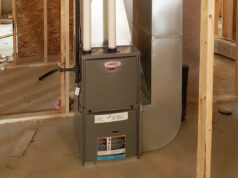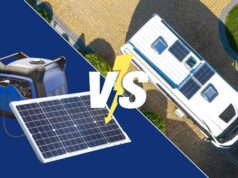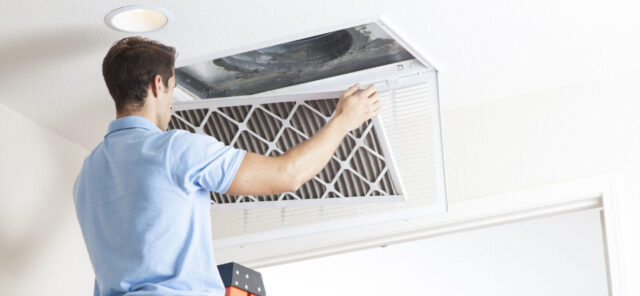
Selecting the appropriate furnace filter is often overlooked, yet it plays a pivotal role in preserving indoor air quality and optimizing HVAC system efficiency.
Amidst the plethora of choices available, navigating through them to find the ideal fit for your requirements can be daunting. In this all-encompassing guide, we aim to dissect the essential factors that should guide your decision-making process.
By doing so, we ensure that you’re equipped with the knowledge needed to make a well-informed selection, thereby elevating not only the comfort levels within your home but also the overall air quality.
1. Filter Type:
There are several types of furnace filters, each with its unique characteristics and filtration efficiency. The common types include fiberglass, pleated, electrostatic, HEPA (High-Efficiency Particulate Air), and washable filters.
Fiberglass filters are cost-effective but offer minimal filtration, while pleated filters provide better efficiency by trapping smaller particles. Electrostatic filters use static electricity to capture particles, and HEPA filters are highly effective in removing microscopic particles.
Washable filters are reusable, providing long-term cost savings but require regular maintenance. Consider your specific needs and budget when choosing the filter type.
2. MERV Rating:
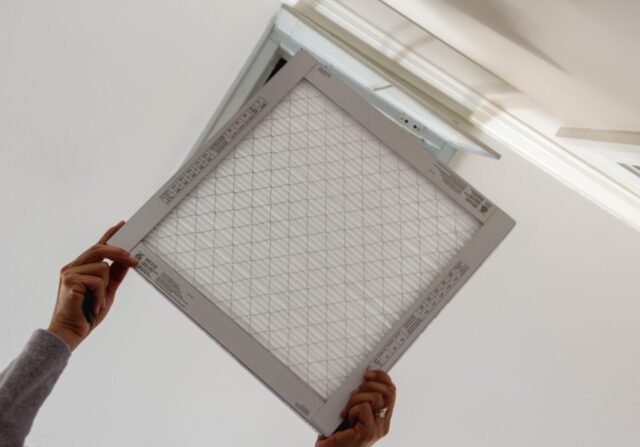
MERV (Minimum Efficiency Reporting Value) is a numerical rating that indicates the effectiveness of a filter in capturing particles. The scale typically ranges from 1 to 20, with higher values denoting greater filtration efficiency.
Filters with higher MERV ratings can trap smaller particles but may also impede airflow, potentially affecting the HVAC system’s performance.
Strike a balance between filtration efficiency and system compatibility by choosing a filter with an appropriate MERV rating based on your indoor air quality requirements and the specifications of your furnace.
3. Filter Efficiency:
When choosing a furnace filter, a crucial factor to consider is its effectiveness in capturing airborne particles, assessed through the Minimum Efficiency Reporting Value (MERV) rating system, ranging from 1 to 20.
Higher MERV ratings indicate the filter’s ability to trap finer particles, thereby enhancing indoor air quality. However, it’s vital to recognize that higher MERV ratings correspond to increased airflow resistance, potentially straining your HVAC system.
Thus, it’s imperative to find a balance between filtration efficiency and airflow to prevent undue stress on your system while still ensuring optimal indoor air quality. Selecting a filter with an appropriate MERV rating aligns filtration effectiveness with system performance, promoting a healthier and more efficient home environment.
4. Airflow Restriction:
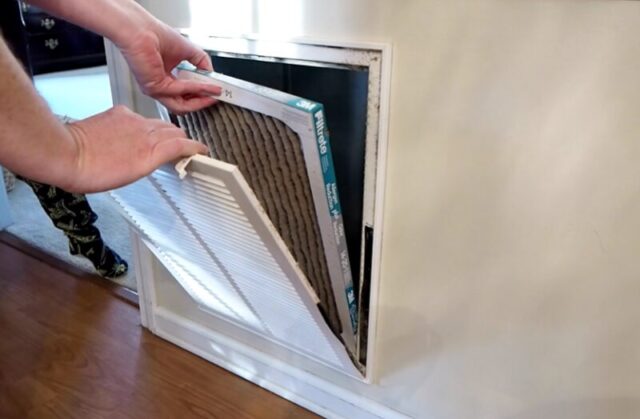
While high MERV-rated filters excel in filtration, they often pose airflow restrictions, potentially diminishing system efficiency and escalating energy usage.
To circumvent these drawbacks, it’s vital to heed your HVAC system’s specifications and adhere to manufacturer guidelines when assessing maximum allowable airflow restriction. Opt for a filter that strikes a balance, offering sufficient filtration without imposing substantial airflow constraints.
By doing so, you ensure your system operates optimally, promoting both energy efficiency and effective air filtration for enhanced indoor air quality. Always prioritize compatibility and efficiency when selecting a furnace filter to maintain peak HVAC performance and minimize energy wastage.
5. Allergen and Pollutant Removal:
Identifying the specific allergens and pollutants present in your indoor environment can help narrow down your filter options.
For households with allergy sufferers or individuals sensitive to airborne pollutants, selecting a filter designed to capture allergens like dust mites, pollen, pet dander, and mold spores is imperative.
Look for filters with electrostatic or HEPA (High-Efficiency Particulate Air) technology, which are highly effective in trapping microscopic particles, promoting cleaner indoor air, and alleviating allergy symptoms.
6. Filter Material:
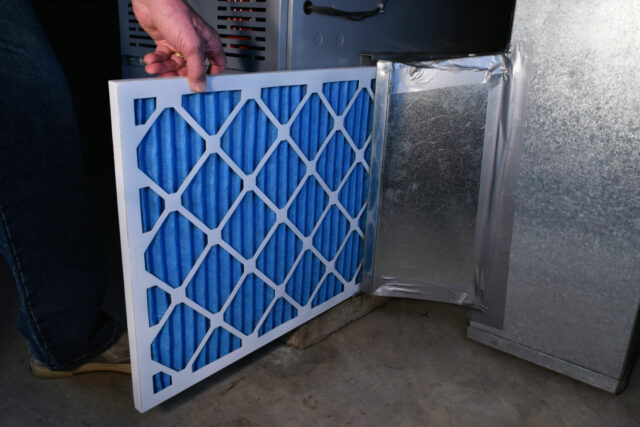
Furnace filters come in various materials, each offering unique advantages in terms of filtration efficiency, airflow, and durability.
Common filter materials include fiberglass, polyester, pleated paper, and electrostatically charged fibers. Fiberglass filters are inexpensive but offer minimal filtration and need frequent replacement.
Pleated paper filters provide better filtration and airflow but may need replacement more often than polyester or electrostatic filters. Electrostatic filters are washable and reusable, making them a cost-effective and eco-friendly option in the long run.
7. Compatibility:
Before purchasing a furnace filter, ensure it is compatible with your HVAC system’s specifications and dimensions, including air filter sizes. Filters come in various sizes and thicknesses, and using the wrong size can lead to air leakage and reduced filtration efficiency.
Refer to your HVAC system’s manual or consult with a professional to determine the correct filter size and type recommended for your system. Additionally, consider factors such as filter frame material and installation method to ensure a secure and proper fit within your system.
8. Maintenance Requirements:

Regular maintenance is essential for ensuring optimal performance and longevity of your HVAC system and furnace filter. Consider the maintenance requirements of different filter types when making your selection.
Disposable filters are convenient and require simple replacement at regular intervals, while washable filters need periodic cleaning to maintain effectiveness. Evaluate your lifestyle and preferences to choose a filter that aligns with your maintenance routine and budget.
9. Cost-Effectiveness:
While it may be tempting to opt for the cheapest filter option, it’s essential to consider the long-term cost-effectiveness of your choice. Disposable filters may seem economical upfront, but frequent replacements can add up over time.
On the other hand, investing in a higher-quality, washable filter may yield savings in the long run due to its reusable nature. Factor in the initial cost, replacement frequency, and energy savings associated with different filter options to determine the most cost-effective solution for your household.
10. Climate and Environmental Conditions:
Consider the climate and environmental conditions in your region when selecting a furnace filter. Homes in areas with high pollen levels, humidity, or pollution may require filters with enhanced capabilities to address specific challenges.
For example, in humid climates, it’s essential to choose a filter that inhibits mold and bacterial growth. Understanding your local environmental factors can guide you in selecting a filter that effectively tackles the specific pollutants prevalent in your area.
Conclusion:
Choosing the appropriate furnace filter is crucial to upholding indoor air quality, optimizing HVAC system efficiency, and fostering a healthful living space.
By thoroughly assessing factors like filter efficiency, airflow restriction, allergen removal, filter material, compatibility, maintenance demands, and cost-effectiveness, you can confidently select a filter tailored to your unique requirements and preferences.
Emphasize the importance of indoor air quality and system functionality by opting for a furnace filter that achieves an ideal equilibrium between filtration efficacy and airflow enhancement.
This mindful selection process ensures not only cleaner air but also prolongs the longevity and performance of your HVAC system, ultimately contributing to a healthier and more comfortable home environment.



